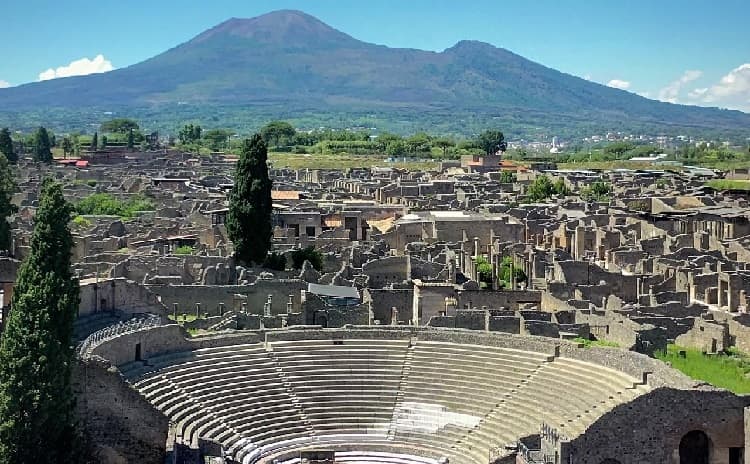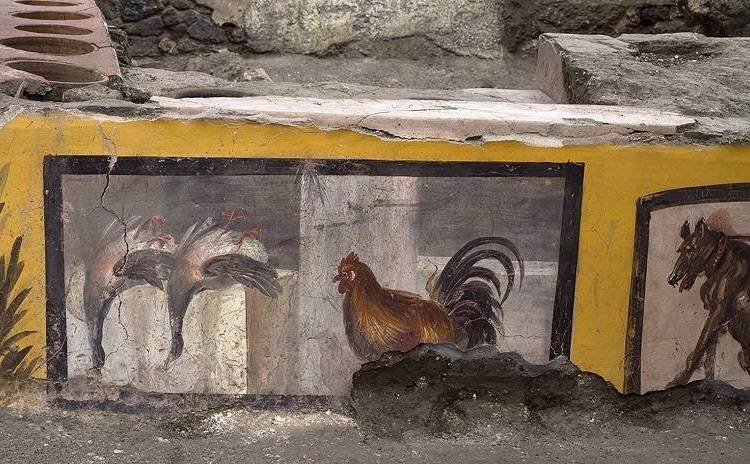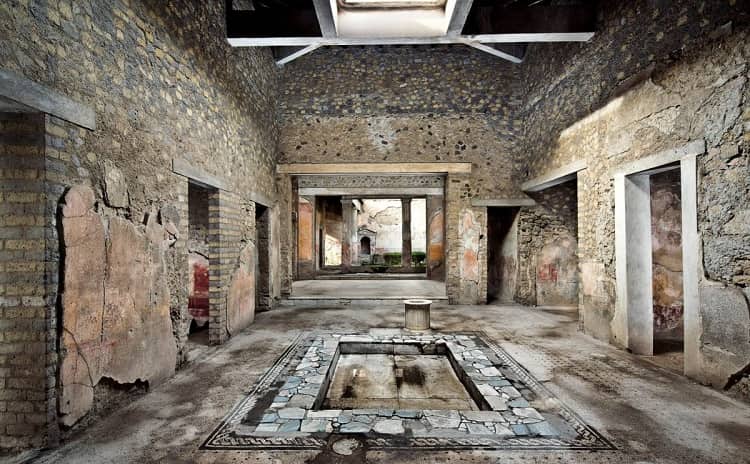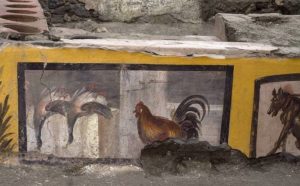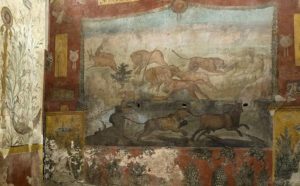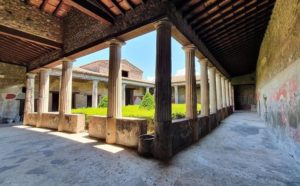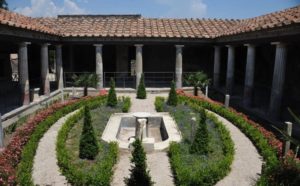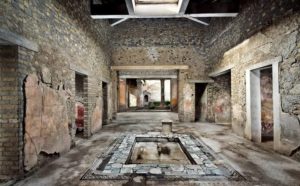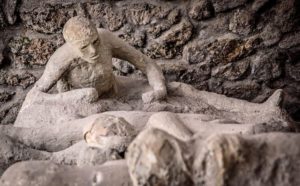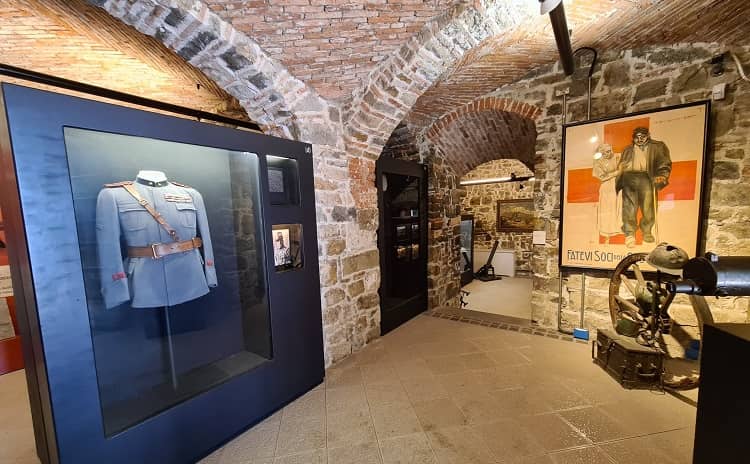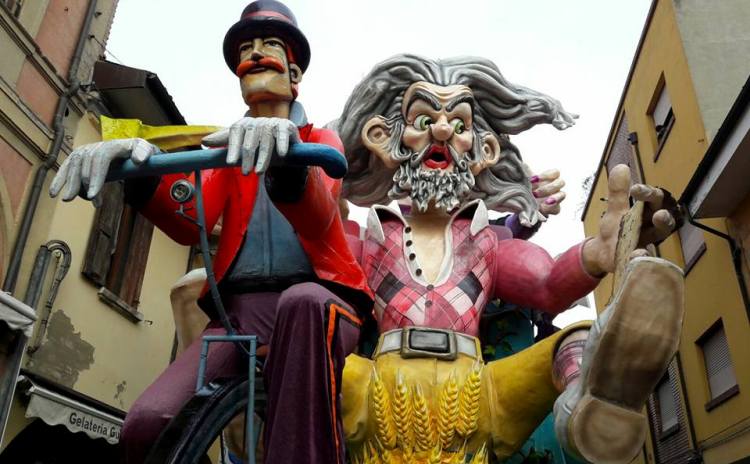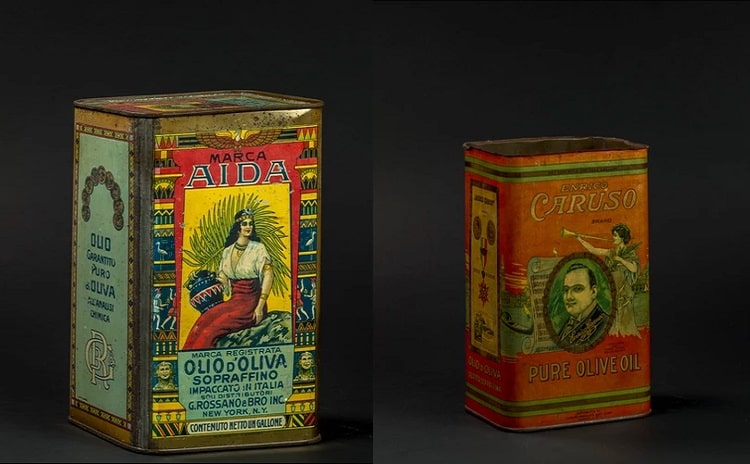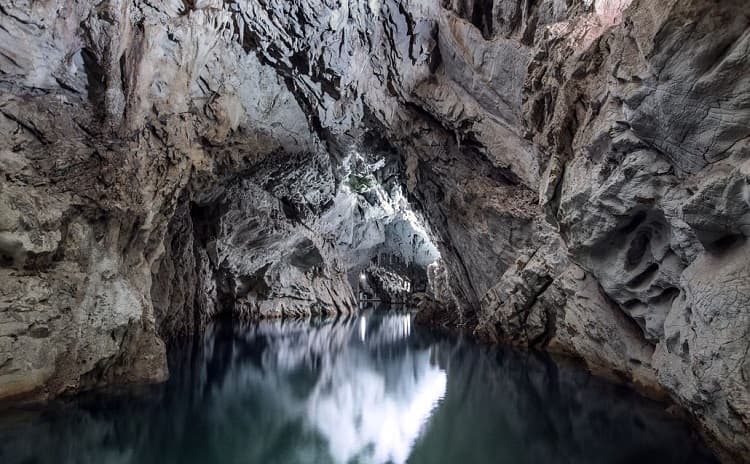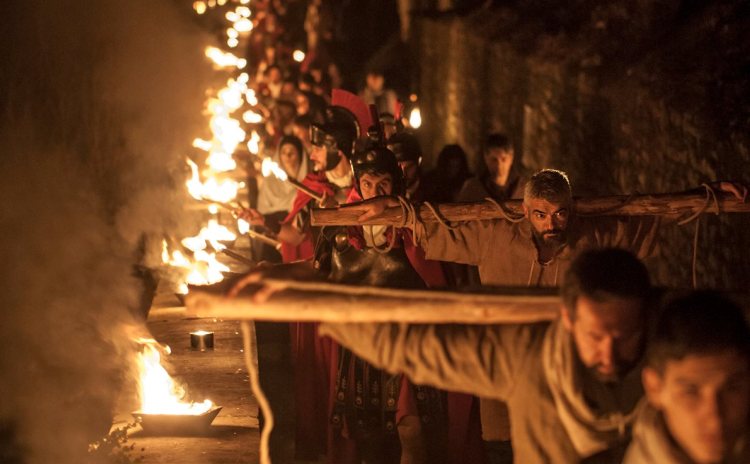Archaeological park of Pompeii
44 hectares, 1,500 buildings. The remains of the city buried by Vesuvius eruption in 79 AD
The Archaeological Park of Pompeii, a rich and thriving city inhabited by the ancient Romans, is one of the most visited destinations in Italy with over 3,500,000 visitors a year. But what’s its origin?
In 79 AD the famous eruption of Mount Vesuvius buried the inhabitants and the cities of Pompeii, Herculaneum, Stabiae and Oplontis under a thick layer of ash and lapilli.
The surface of ancient Pompeii was about 66 hectares. To date, the excavated area is about 44 hectares with 1500 buildings including domus and monuments brought to light.
After the catastrophe, the whole territory up to the sea was gradually abandoned. The same surviving Pompeians recovered part of their belongings and precious furnishings from their homes and left a city that was at that time unlivable. In the following centuries the houses were plundered and the area became a large quarry for materials including marble, stone blocks and lead. . Sometimes the emerging structures were reused for other purposes.
Archaeological excavations began in 1748 on the initiative of Charles III of Spain and for over two centuries they have been working on the site to unearth the ancient Roman city.
The excavations represent an extraordinary observation point to get to know about the different types of Roman houses and their transformations over time.
The type of dwelling among the upper classes was the domus, with a large courtyard in the center around which the various rooms were arranged: the bedrooms (cubicula), the service rooms, the dining rooms (triclinium) and living room. In the center of the courtyard there was a pool (impluvium) that collected rainwater entering through a special opening on the roof (compluvium) from which the sunlight also came. From the impluvium the water passed into an underlying cistern used for domestic use.
The less well-off families lived in much smaller houses and with a less complex internal architecture.
Outside the city the landscape was characterized by the presence of different types of villas such as the urban villa and the rustic villa.
During Pompeii excavations, the remains of over 1,000 victims were found. During the first eruptive phase, the inhabitants who did not leave the city in time were trapped or hit by the collapses caused by the eruptive material, and only the skeletons of these victims have been found. The heat that hit Pompeii subsequently caused the instant death by thermal shock of those who were still in the city. It was possible to make a hundred casts of the bodies of these victims. The casts are exposed in metal and glass display cases.
The excavations are divided into nine areas called regiones. To visit the entire archaeological site it takes several days because there are many and different tour routes along the streets of Pompeii through the main buildings and Roman houses.
USEFUL INFORMATION
To know the opening hours please visit the website>>>
Entrance with a fee
Compulsory routes and scattered access
See also the Facebook page of the Archaeological Park of Pompeii
Photos from the official website and from Facebook
DON’T MISS TO VISIT ALSO HERCULANEUM AND THE SUBMERGED PARK OF BAIA!
Seize the opportunity to visit also the Archaeological Park of Herculaneum, the other Roman city destroyed by Vesuvius eruption in 79 AD
If you are in Pompeii in the Summer, you may enjoy to visit the great Submerged Park of Baia: an entire Roman city visible a few meters below sea in Pozzuoli. 25 km from Naples and 60 km from Pompei.
More Information >>>

